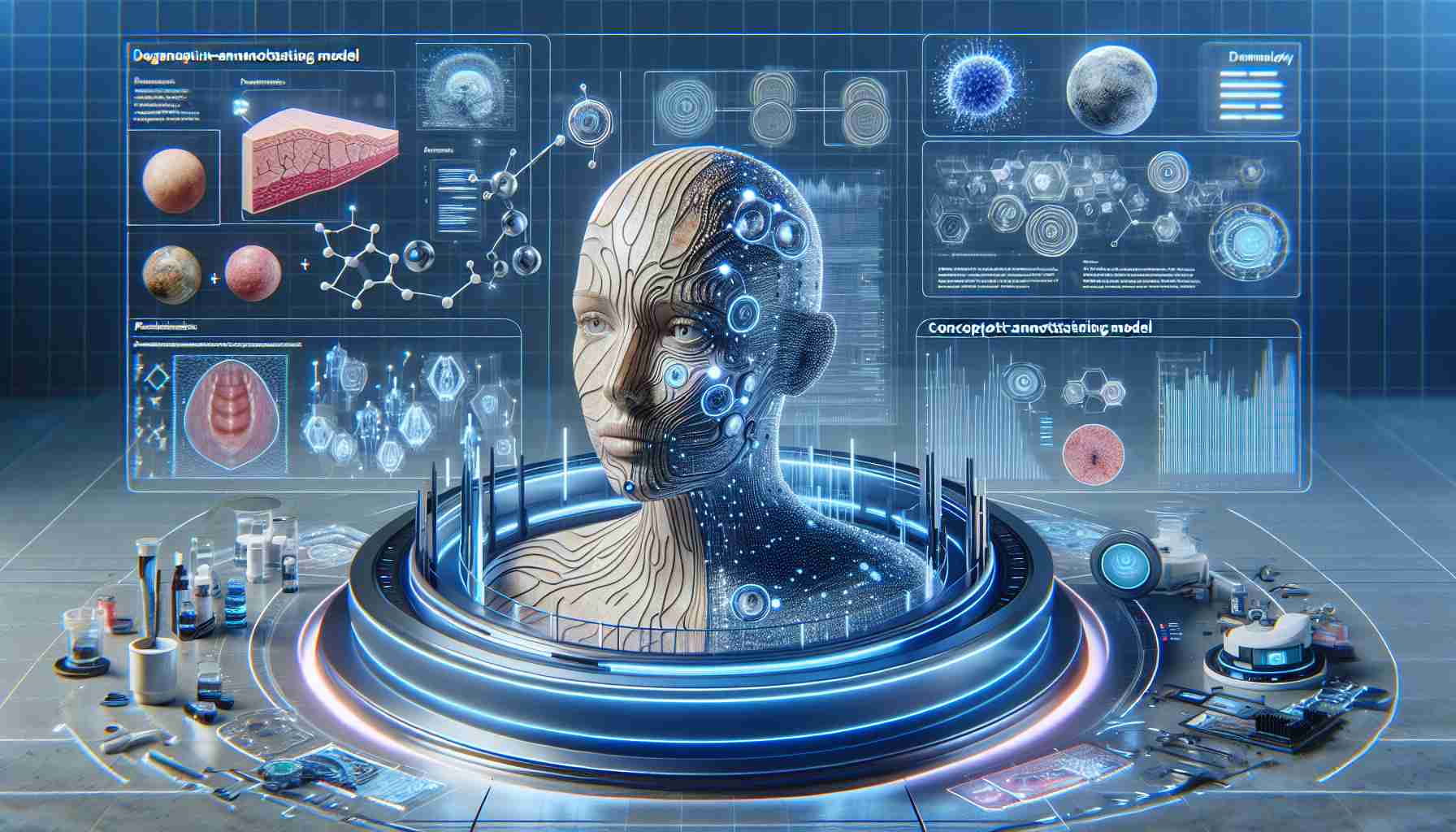A novel artificial intelligence model, dubbed MONET, has been ingeniously created to interlink medical images with relevant medical concepts in the textual form, facilitating vital tasks in the development of medical AI applications. This groundbreaking work was brought to light in a recent publication in Nature Medicine.
What is MONET?
MONET stands out as an incredible leap forward in medical AI as it can intelligently link medical imagery, specifically in dermatology, to semantic ideas imperative for clinical understanding. It assigns ratings to images based on the representation of a concept, allowing for large-scale, automated image-text pair information handling that sidesteps manual labeling.
Study Findings and Contributions
By gathering over 100,000 dermatological image-text pairs from PubMed articles and medical textbooks, researchers trained MONET in identifying distinctive patterns and concepts. This artificial intelligence can now parse dermatological photographs and clinical images more accurately than ever.
Moreover, MONET’s method outperformed other supervised learning strategies, including the pretraining model of OpenAI’s CLIP, bringing about a more profound understanding of the underlying concepts. It excelled at annotating the most conceptually representative images from vast dermatological datasets.
The Future of MONET in Clinical Applications
This versatile AI platform has verified its potential to aptly illuminate concepts across dermatological images, as confirmed by credentialed dermatologists. The model has proven its mettle by achieving better performance metrics in concept annotation, data auditing, and model interpretability developments.
In summary, this study reveals the capacity of text-image AI models to augment the transparency and reliability of medical AI. The concept-annotating platform MONET may elevate dermatological AI transparency and trustworthiness. As AI models become more refined through improved data collection, processing, and optimization, medical artificial intelligence promises greater dependability, paving the way for more robust clinical deployment and monitoring of medical imaging AI systems.
Related Challenges and Controversies
While MONET and similar AI models in dermatology are groundbreaking, their development and application come with significant challenges and controversies. One major challenge is the need for extensive and diverse datasets that represent various skin types, conditions, and stages of diseases to avoid bias in AI models. Ensuring data privacy and security is also critical, as the models require access to sensitive patient images and information.
There is also the potential issue of over-reliance on AI, which might lead clinicians to underutilize their expertise or overlook anomalies that the model may not recognize. Hence, maintaining a balance between AI assistance and medical professional judgment is essential. Another concern is the interpretability of AI decisions. Despite improved models like MONET promising better transparency, there is still a level of opaqueness in AI decision-making processes that complicates trust and accountability.
The risk of errors and misdiagnoses is also an inherent disadvantage of AI in medicine. As with any technology, there is always the possibility of malfunction or failure, which could have serious implications for patient care.
Advantages and Disadvantages of AI Innovations in Dermatology
AI innovations such as MONET have several advantages. These include increased efficiency in processing and interpreting vast numbers of medical images, which can aid in speeding up diagnosis and treatment strategies. They also improve the scalability of dermatological assessments, enabling the analysis of more cases than would be feasible manually.
Moreover, AI models can help in standardizing diagnoses, potentially reducing variability between different clinicians’ interpretations. Another advantage is in research and training, where AI can aid in identifying educational gaps or provide a database of annotated images for medical training.
On the disadvantageous side, there are concerns about algorithmic bias, where AI models may perform poorly when confronted with data that were underrepresented during their training. Additionally, the cost of developing, maintaining, and implementing such advanced AI systems can be significant, potentially limiting access to only well-funded institutions.
Furthermore, the legal and ethical implications of AI in medicine are still being debated, including questions about liability in cases of AI errors, and ensuring the ethical use of patient data during AI training processes.
If you wish to explore more on the topic of AI in dermatology and related innovations, the Understanding of Dermatology could potentially be enriched by visiting the main websites of organizations such as the American Academy of Dermatology aad.org or the International Skin Imaging Collaboration isic-archive.com, which focus on dermatological education and might provide additional resources or statements on AI developments in their field.

